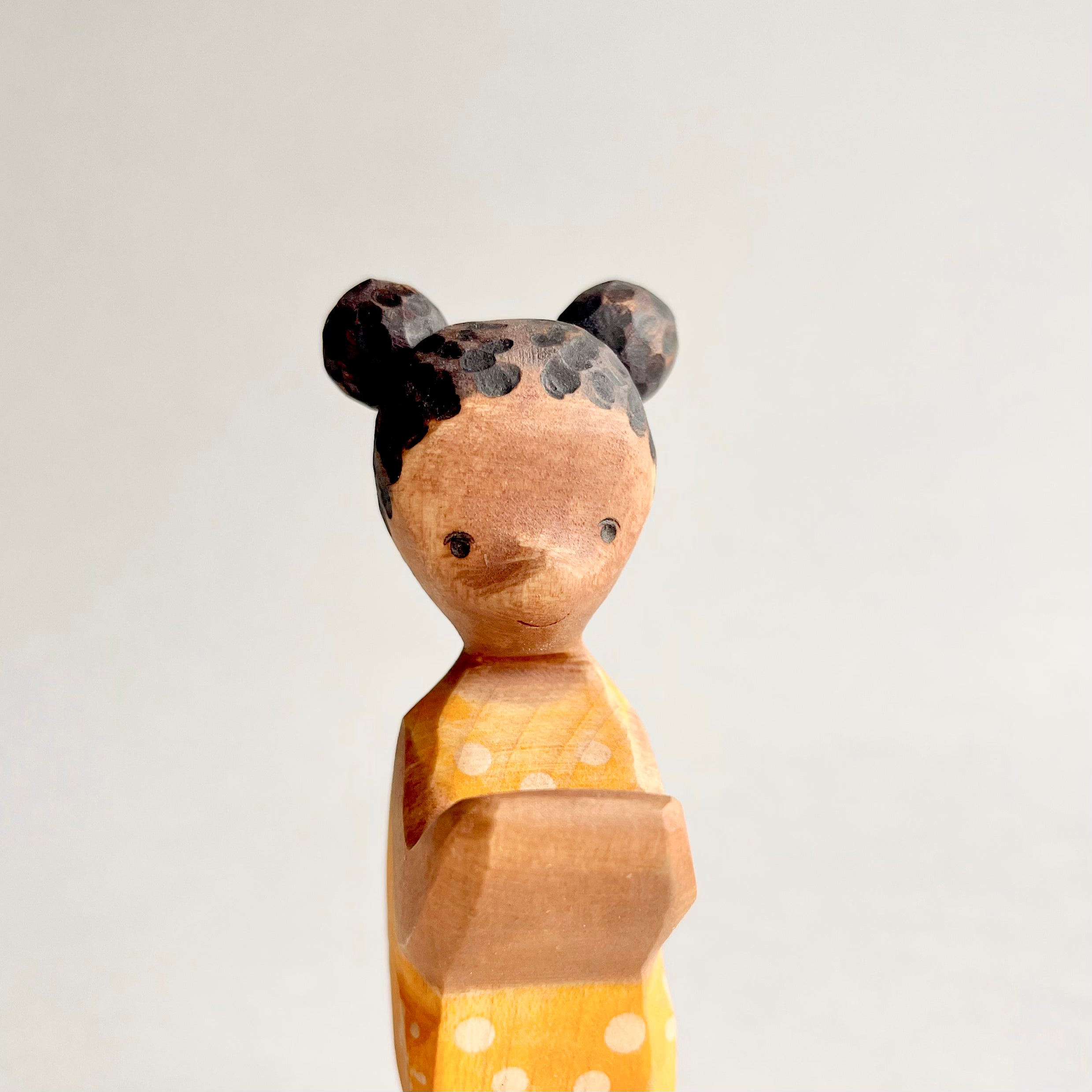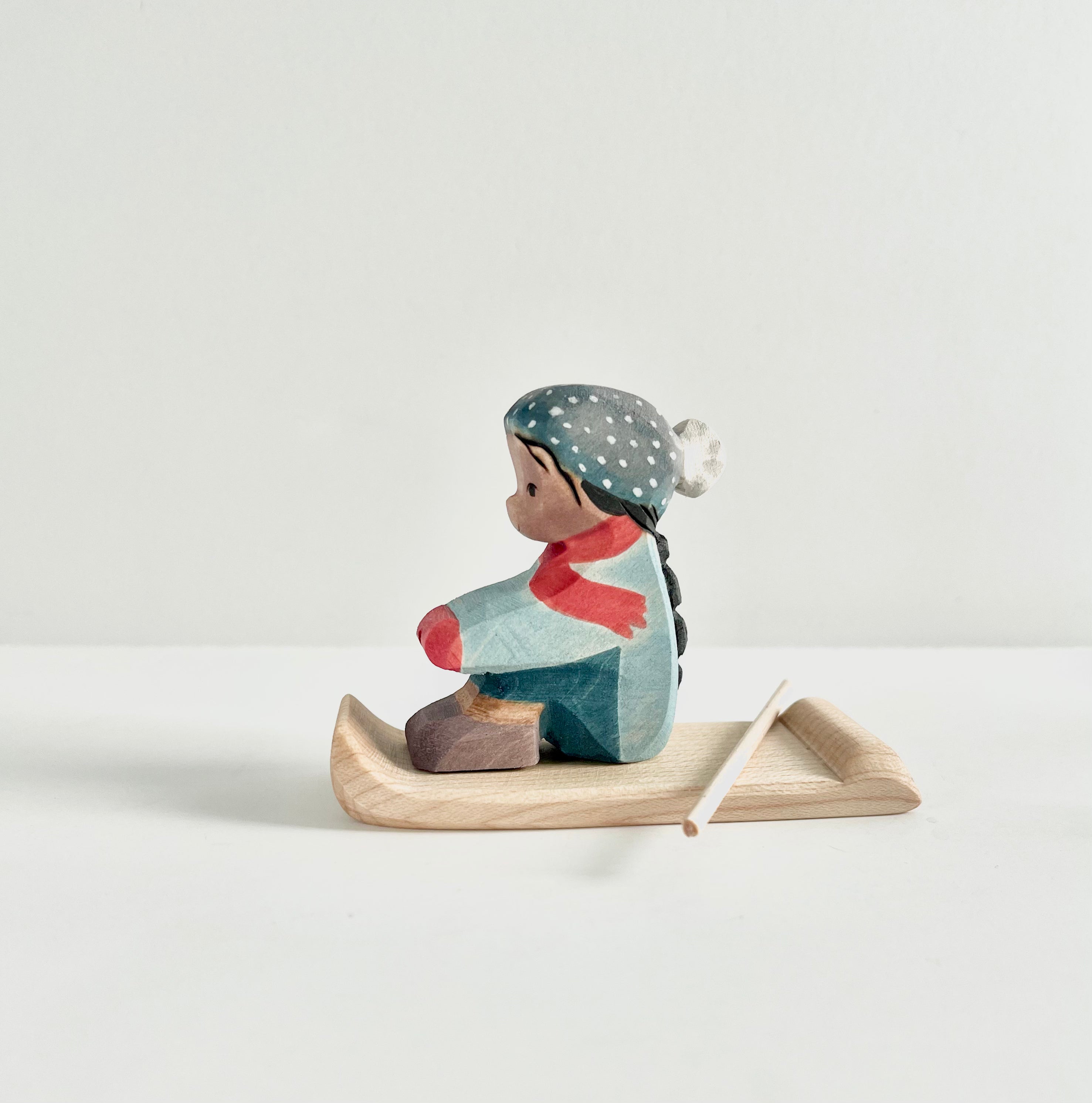Designing People Figures
Collaborators are always BIPOC who are passionate about representation and have strong ideas about what features they would like to see in a figure. Collaborators are always compensated for their work, either paid or through trade, however they choose.
From Our Collaborators








“One of my focuses in University was children’s literature; fairytale archetypes are fascinating. These tales are supposed to invite the imagination however it was clear not everyone was allowed to project themselves into the narrative. Working on a project that touches on so many of my passion points and opens the door for more children was a gift.
Introducing a kindly knowledgeable cottage witch with natural hair, caramel skin and pockets full of foraged herbs is wonderfully subversive and positively reclaims many of the reasons women were historically labeled as witches. We tried to truly embed each detail intention.
These toys invite everyone to the table; they heal wounds that some of us have had for decades and mean our children won’t have them.”
“We are Indian American and my daughter and son both have warm skin tones that are unique even from each other, varying shades of brown. I wanted my children and their friends to be able to see themselves in our collection of toys and learn to embrace people of all walks of life.
Genevieve and I worked together to create a very special ice queen who embodies the spirit of winter, she’s fierce, she’s confident, she’s inspiring, she’s magical! we wanted to create a queen with a strong facial expression, a fierce hairstyle, a powerful cloak, and some sparkling magical touches for a hint of whimsy & charm!
It is important for my daughter to see her reflection in the snow queen and know that she can become a strong & powerful leader just like her!”
“My first collab was of a thought of never seeing indigenous representation in almost anything but more specifically a mermaid in this case. Skin tone based off my mom! Hair color based of family/tribe hair color. Hair style based off cultural significance.
Our hair being such a huge part of our identity this is a good article about why that you should read. It is local to me in North Dakota too! It focuses on men but it’s pretty universal, just that men/males are the ones who get the unfortunate stigma around having long hair so it’s important for others to understand it’s equally important in my culture at least.
why-indigenous-boys-and-men-wear-braids”
“I was new to the group when I volunteered to collaborate not exactly knowing what it would look like. I thought it would be fun and creative and it was but it also gave me a peek into the little hedgehog mission. But it was also so much fun too!
I was surprised with the amount of creative freedom I was allowed working on this piece. Genevieve asked me to choose hair and skin tones and I chose shades closest to my great grandmother. When I was unsure she helped me decide by blending two. She really worked to get the perfect shade and even looked at pictures with me to help us decide. The outfit is made using 4 main colours you see in Tlingit art, red, blue, white, and black. We thought using the colours was a lovely tribute to my culture while also keeping little sledder versatile and appropriate.
All of these choices led to what, for me and for my children, looks so much like a little Tlingit sledding or fishing. We have a lot of toys and books surrounding our culture but this will be our first toy that really looks like Grandma Elizabeth and all of my ancestors. The feeling this inspired for me as an adult just proves how important and special representation is in toys and media for our children. I am grateful for the little hedgehog mission and the opportunity to contribute to the burrow! Gunalcheesh 🙏🏼 (Thank you with much respect)”
“The importance of this collaboration for me was all about representation. I feel very strongly that representation matters and growing up, there were no Asian anything that looked like me or the family I had. Growing up, so many BIPOC never saw people that looked like them being admired and elevated in our society, let alone in the toys we played with. This sends so many messages to our kids that they internalize, unless we counter that message and show that they belong; that all of our differences are amazing. The only toy I ever remember having that looked like me was a doll that my Mom sewed herself.
We all want to do better for our kids and it starts with the small things that we can control, like variations in skin and hair color in this instance. The hair and skin choices were based on family and friends who had black hair but not the porcelain skin that has historically been praised in Asian culture and is steeped in classism.”
“When genevieve reached out to me, I hesitated a bit. I thought, why would she want to collaborate with me? I have nothing to offer. But then after some more procrastination and overthinking, I felt like i hadn't seen any figures that looked my daughter. I’m Asian, and specifically Indian. I wanted to bring to life something that matched Genevieve’s passion for inclusivity and Little Bookworm was born.
I often found my daughter on the floor writing and scribbling and talking to her siblings laying on her stomach. So when the time came to decide what pose we were after, it was a no brainier to pick this one. It’s less often these days but I wanted to capture that pose forever! And, I haven’t yet seen a design like that from LH. The colours on the body really do come from my daughter loving pink and purple and while the flowers came about very naturally, I can relate it after the fact because my daughter absolutely loves the song “flowers” and pretty much everyday we are jamming to it on repeat. What a coincidence. It was meant to be.
It was definitely an interactive process, it has probably taken us a year with both of our schedules and kids and families. But I am so happy we have worked it out in between our schedules! I hope everyone likes this as much as I do and I thoroughly enjoyed collaborating with Little Hedgehog.”
“I chose to work on a figurine that represents my first born (my son) and our family's Waldorf way of life and values. Children love birthdays and the celebration of themselves and my son is no different -- he absolutely loves his birthday and the simple yet magical and meaningful celebration of his birth in the Waldorf way has made each birthday truly special for us. So here is my son as a Waldorf Birthday Boy with his atypical long hair, honey-ish skin tone, black hair in his favorite Waldorf birthday crown and cape! A mixed Asian boy in Waldorf..."
“For this collaboration, I really wanted to highlight my Jamaican culture, black people, royalty and to celebrate locs and natural hair. I must say though that Jamaican wooden decor are common with street vendors and in some stores and I grew up having many in my home - they were always a representative of the people around and many had themes of the Rastafarian culture, locs and natural hair. As a child I would always see the wood makers on the side of the streets in Kingston and the countryside, here they would carve images of people, nature and animals etc and this was my first introduction to wooden art in general. Natural hair on a whole is very dear to my heart because as a woman who wears her hair natural and who has family and friends with locs, it is so important for my daughter especially to see the people she loves represented in the figures that she plays with so I knew that this figure would be perfect.
The flag colors and also this wooden figure are a representative of the following- Black depicts the strength and creativity of the Jamaican people; Gold, the natural wealth and beauty of sunlight; and green, hope and agricultural resources.
Rastafarian as a culture was also started in Jamaica and many men have extremely long locs - as I haven’t seen any figures here with long locs or even locs in general really wanted this to be created!
There is still so much discrimination towards people who wear locs in schools, the workplace and society etc. Locs are so beautiful and I’m so grateful to be able to highlight this!Men also get so much stigma for having long hair so creating a King with long locs was important to make.
Being able to show my daughter the finished product and for her to say “he looks like my daddy“ was literally the icing on the cake for me! Being able to give BIPOC actual figures that look like them is something that is so needed and wanted."











